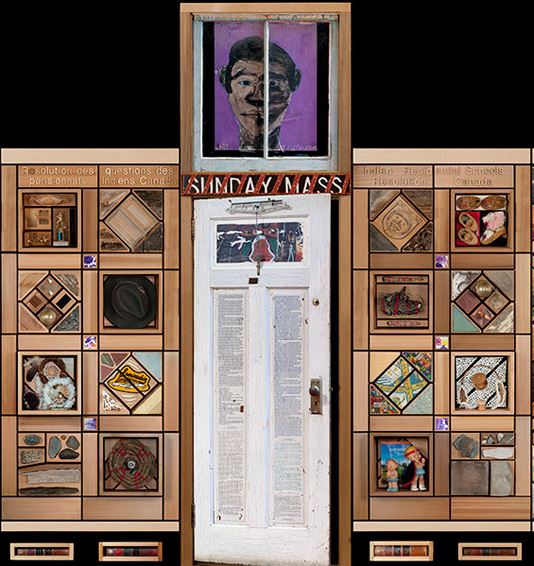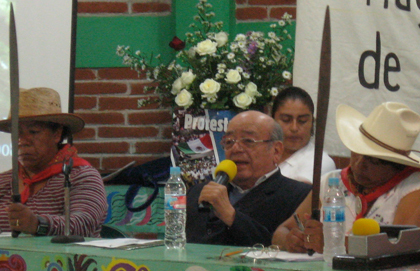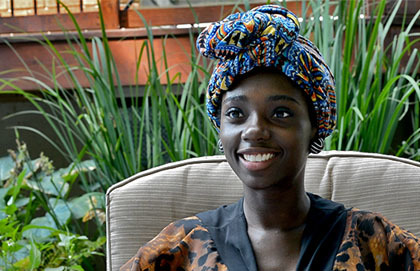On a recent visit to Winnipeg, I was given a tour of the Canadian Museum for Human Rights (CMHR) with Dr. Clint Curle, Senior Advisor to the President of CMHR.
As we visited, we discussed how religious freedom is explored by the museum’s curators. More specifically, we looked at the tensions that exist between competing rights and privileges in Canada and across the globe.
Dr. Curle is a former Professor at Carleton University, where he taught at the intersection of human rights and legal theory. We viewed The Witness Blanket, and later spoke about this exhibit and the role of museums in reconciliation.

The Witness Blanket is an installation by Carey Newman (Ha-yalth-kingeme), an Indigenous Canadian artist whose passion lies in merging tradition with contemporary culture. Inspired by woven blankets—which symbolize protection and comfort—Newman created a wooden quilt which weaves together fragmented pieces of Aboriginal history and spirituality. Comprising various artifacts from Canadian Indian Residential schools, government buildings, treatment centres, churches, and other significant places, The Witness Blanket “stands as a national monument to recognise the atrocities of the Indian Residential School era, honour the children, and symbolise ongoing reconciliation,” says the exhibit website.
Pieces of floorboards, walls, doors, religious iconography, paintings and more are intricately placed side by side to form a mixed media commemoration of residential schools in Canada. It holds segments from survivors’ belongings, too. Books, clothing, toys, and even the hair of residential school survivors are woven together in the memorial. These pieces of history tell onlookers a story that has long been muzzled.
The Witness Blanket website describes the project:
Strewn in the wake of the Indian Residential Schools are an immeasurable number of broken or damaged pieces. These fragmented cultures, crumbling buildings, segments of language, and grains of diminished pride are often connected only by the common experience that created them. Imagine those pieces, symbolic and tangible, woven together in the form of a blanket. A blanket made from pieces of residential schools, churches, government buildings, and cultural structures.
Through the blanket, Carey expertly curates splinters from Canada’s history that, when isolated, can’t tell the full story of the Residential schools. “Left alone, these pieces may be forgotten, lost, buried, or worse – be uncomfortable reminders that leave painful impressions on the minds and hearts of those who recognize what they represent,” the website continues.
Dr. Curle describes the charge for museums to be active in reconciliation:
In the Summary Report of Canada’s Truth and Reconciliation Commission, the Commissioners spoke directly about the role of museums in reconciliation. They said: ‘Museums have an ethical responsibility to foster national reconciliation, and not simply tell one party’s version of the past. This can be accomplished by representing the history of residential schools and Aboriginal peoples in ways that invite multiple, sometimes conflicting, perspectives, yet ultimately facilitate empathy, mutual respect, and a desire for reconciliation that is rooted in justice.’ The Witness Blanket exhibition does all these things. It fits well with our overall approach to our work, which focuses on bringing diverse voices and viewpoints together to encourage reflection and dialogue on human right.
The Witness Blanket offers a platform on which Canadians can hear the untold stories of survivors and ultimately practice the empathy and solidarity required for reconciliation.
You can see a full discussion of reconciliation on the Museum’s website at https://humanrights.ca/about/mandate-and-museum-experience/contributing-reconciliation and https://humanrights.ca/exhibit/witness-blanket. To learn more about The Witness Blanket, or to follow the exhibit as it travels across the country, go to witnessblanket.ca







